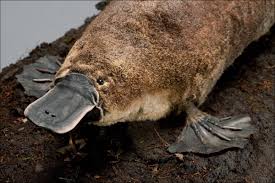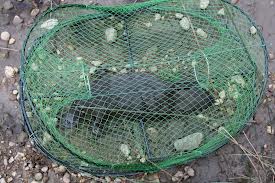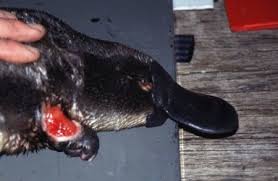Why Endangered?
The duck-billed platypus was once hunted to near extinction due to its highly prized fur. A single fur coat would require more than 70 pelts. Fortunately, the Australian government put an end to this practice when it protected the species by law in the National Parks and Wildlife Act of 1974. Since then, as the platypus has very few natural predators, the platypus population has rebounded; and although the current population size of the platypus is unknown, it is now commonly found throughout Eastern Australia and Tasmania. For this reason, the platypus is no longer considered to be endangered, and the Australian Government has declared the platypus “common but vulnerable”.
The International Union for Conservation of Nature (IUCN) currently classifies the platypus as “least concern” on its Redlist of threatened species. Yet even though the platypus population is fairly healthy, humans still pose many threats to the future of the duck-billed platypus. Habitat destruction due to deforestation is starting to limit the range of the platypus into smaller and smaller areas every year. Although platypus hunting is illegal, the platypus is often trapped and killed in fishing nets. This has become such a problem, that Australia has now made it illegal to use fishing nets in freshwater rivers and creeks.
As Australia’s human population continues to rise, more and more dams and irrigation projects are being developed to meet the increasing need for electrical power and to provide freshwater for agricultural use. In addition, human activities have been polluting the riparian environment with harmful chemicals, trash runoff, and raw sewage that contaminates the water the platypus depends on for survival. In fact, the platypus has nearly disappeared from the southernmost part of Australia due to human population growth.
Tasmanian platypuses are subject to a disease caused by the fungus Mucor amphibiorum, which has fortunately not migrated to the mainland. Affected animals often develop skin lesions or ulcers, and the biggest threat to their survival arises from secondary infection. This can affect the platypus’s ability to maintain body temperature and to hunt properly for food on the bottom of rivers and creeks.
The future of the platypus rests entirely on the hands of humans and what we do to conserve their habitat and give them protection. Hopefully the platypus will remain on Earth for many generations to come.




this is cruelty
yes it is
i sorry mr platypus
nuuuuuu perry
perry no dont die